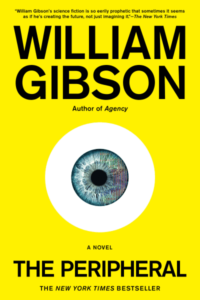I enjoy William Gibson’s science fiction novels. He has a knack for projecting technologies into the future. For example, I was fascinated by how he envisioned cyberspace and the concept of virtual worlds in Neuromancer, which was published in 1984, well before the popularity of the internet.
Ever since reading Neuromancer and Count Zero, I’d been wanting to read more of Gibson’s work. The Peripheral kept showing up in my reading recommendations. So when I saw that Amazon was turning the book into a television series, I decided to prioritize it on my reading list so I could read it before watching it. I always find it interesting to see how directors take an author’s work and convert it to a visual form.
The premise behind The Peripheral is captivating. People from the future figure out how to influence the past. They don’t physically travel back in time. Instead, they use virtual reality to make contact with individuals from a particular timeline in the past, or a “stub” as Gibson calls it. These timelines become stubs because once influenced by the future, they no longer represent the timeline in which that future exists. To make the story even more engaging, individuals from the past can be pulled into the future to inhabit “polts”, which are physical bodies that people from the past occupy to have a physical presence in the future.
The story flip-flops between scenes that take place in a dystopian, rural town in the present where people struggle for their daily existence and a futuristic version of London where the majority of the population has been decimated after a post-apocalyptic event known simply as “The Jackpot.” Burton and his sister Flynne are drawn from the past into a future by Wilf Netherton, a PR person who is trying to protect the interests of his powerful backers. At first, Burton and Flynne aren’t aware that the virtual reality they are experiencing is actually the future. Once they discover the truth, they realize that they are in a fight to protect not only their way of living but also their existence.
While I enjoyed the concept, Gibson’s writing was laborious and slow at times. It got a little too bogged down in the details for my liking, which the TV show does without in order to keep the plot moving. So I found the book to be a mixed bag. From a premise point of view, it’s very good. From a story point of view, it’s simply OK.
If you enjoy Gibson’s other works, then I would recommend The Peripheral. You’ll be willing to tolerate the writing style and still be able to enjoy the story’s premise. If you’re not familiar with Gibson’s work or just a casual reader, then I’d recommend the Amazon Series (trailer below). While it’s not 100% accurate to the book, it’s close enough and does a great job embodying the crossover between the present and the future.

